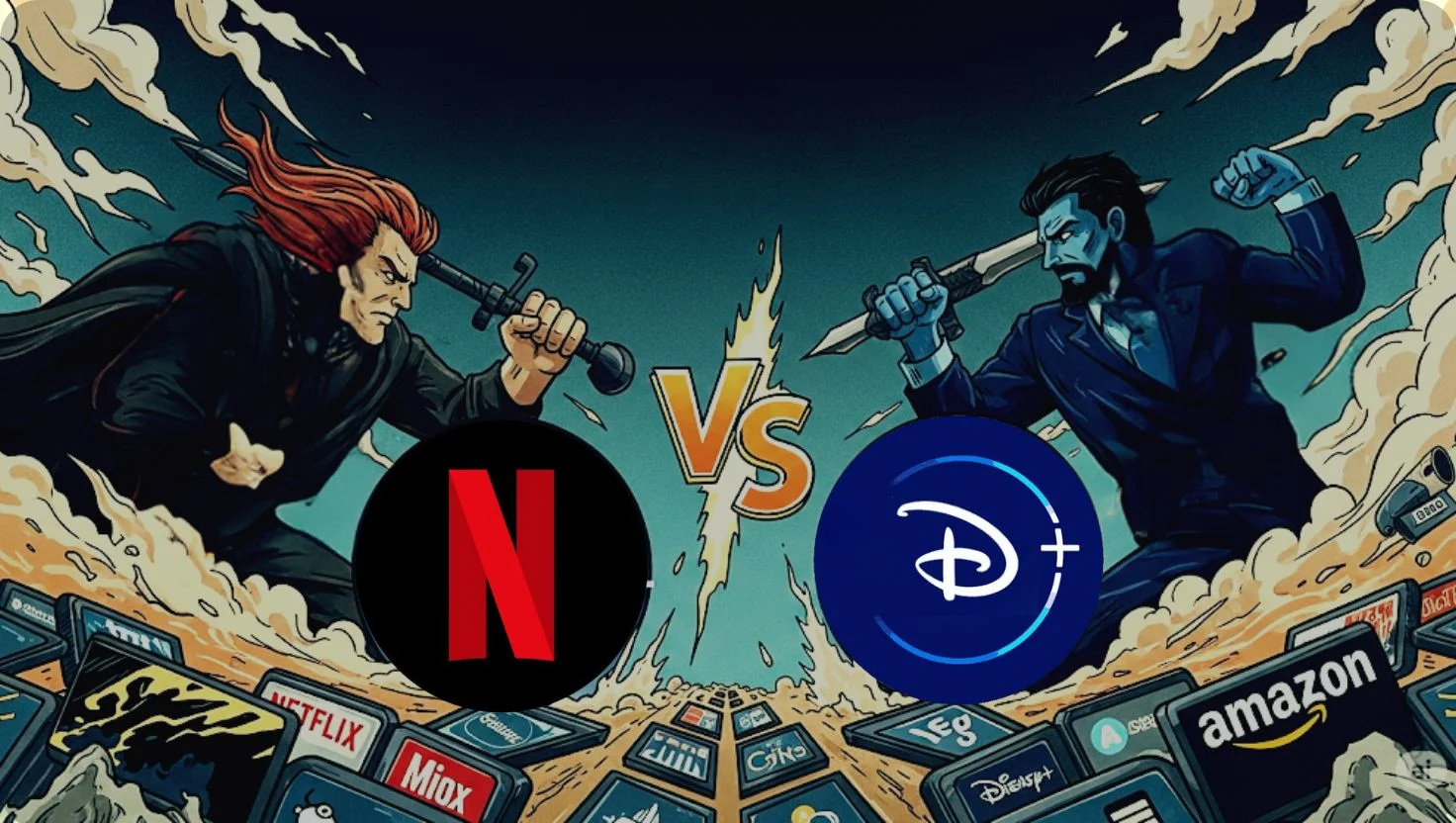Netflix, Disney+, and Amazon Prime Video are battling for your screen time—and it’s affecting how people watch movies. These big streaming platforms are not just for binge-watching shows anymore. They’re now offering movie-level content, live sports, and even exclusive releases that used to belong in cinemas. As of 2025, this “streaming war” is changing the future of movie theaters.
Content Strategies: Attracting Moviegoers
Each of these platforms is using different types of content to grab your attention:
- Netflix is the leader with over 300 million subscribers worldwide. It offers everything from international dramas and reality TV to games, live shows, and documentaries. In 2021, Netflix released over 70 movies, and it continues to focus on variety to keep people engaged.
- Disney+ uses its strong brands—like Marvel, Pixar, Star Wars, and FX—to draw in fans. It owns 8 of the top 10 highest-grossing films ever. Its bundle deals with Hulu and ESPN+ make it a family favorite and a strong competitor for moviegoers’ time and money.
- Amazon Prime Video is focusing heavily on live sports, including its new deal to stream WWE’s “Raw” in 2025. This helps them pull in viewers who would otherwise go to live events or sports theaters.
Subscription Plans and Bundles
All three services are trying to be more affordable than a trip to the movies:
- Disney+ offers bundles with Hulu and ESPN+ at discounted prices, making it a complete package for families and sports fans.
- Amazon includes Prime Video with its regular Amazon Prime membership, but now shows ads unless you pay $3 more per month to remove them. This lets Amazon earn more money while still keeping prices low for users.
- Netflix has added an ad-supported plan, giving users a cheaper option. This plan also helps Netflix earn from advertising, which brought in $2.2 billion in the U.S. alone in 2025.
Ads: A New Source of Revenue
Advertising is now a major part of how these platforms earn money:
- Amazon reaches over 34 million U.S. viewers with ads, giving it strong influence and global ad potential.
- Netflix had 8% of all connected TV watch time in the U.S. in March 2025. Its growing ad business is now a major part of its profit.
- Disney is second only to YouTube in ad revenue. Its success comes from strong brand loyalty and wide family appeal.
All three platforms are using ads to keep prices lower for users while making more money behind the scenes.
Impact on Traditional Box Office
All of this is bad news for traditional theaters.
Instead of going out to see a movie, people can now stay home and stream new releases, live sports, or exclusive shows. Platforms like Netflix and Amazon also offer content that never makes it to theaters, giving viewers even more reasons to skip the cinema.
For example:
- Netflix invests in sports documentaries and live events.
- Disney+ pushes ESPN+ for live sports.
- Amazon’s WWE deal pulls wrestling fans away from stadiums and big-screen sports bars.
These options are not only convenient—they’re also cheaper. That’s why movie ticket sales are falling, and more studios are choosing to launch their films directly online.
| Platform | Subscribers | Main Focus |
|---|---|---|
| Netflix | 300 million+ | Engagement, ad revenue |
| Disney+ | 111.3 million | Bundles, brand power |
| Amazon Prime Video | 166 million (U.S.) | Live sports, ads, shopping integration |
Conclusion
As of mid-2025, Netflix, Disney+, and Amazon Prime Video are reshaping how we experience movies and live entertainment. With smart bundles, ad-supported plans, and exclusive content, these platforms are offering strong alternatives to movie theaters. While cinemas aren’t gone yet, the streaming giants are making it easier—and cheaper—to stay home and watch.
The streaming wars are far from over, but one thing is clear: how and where we watch movies has changed forever.

